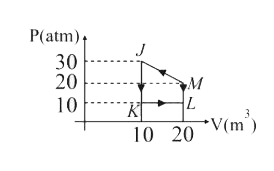Match the following two column for a convex lens corresponding to object position shown in Column-I (Note : O - Optical centre, F1 - First focus, F2 - second focus)

The correct Answer is:A(q, r), B(p, s), C(p, r), D(p, r)
Step by step video solution for Match the following two column for a convex lens corresponding to object position shown in Column-I (Note : O - Optical centre, F_(1) - First focus, F_(2) - second focus) by Physics experts to help you in doubts & scoring excellent marks in Class 12 exams.
Updated on:21/07/2023Topper's Solved these Questions
- RAY OPTICS AND OPTICAL INSTRUMENTSBOOK - AAKASH INSTITUTECHAPTER - RAY OPTICS AND OPTICAL INSTRUMENTSEXERCISE - Assignment (Section - G) Integer Answer Type Questions
3 Videos
- RAY OPTICS AND OPTICAL INSTRUMENTSBOOK - AAKASH INSTITUTECHAPTER - RAY OPTICS AND OPTICAL INSTRUMENTSEXERCISE - Assignment (Section - H) Multiple True-FalseType Questions
3 Videos
- RAY OPTICS AND OPTICAL INSTRUMENTSBOOK - AAKASH INSTITUTECHAPTER - RAY OPTICS AND OPTICAL INSTRUMENTSEXERCISE - Assignment (Section - E) Assertion - Reason Type Questions
11 Videos
- PHYSICAL WORLDBOOK - AAKASH INSTITUTECHAPTER - PHYSICAL WORLDEXERCISE - ASSIGNMENT (Section-B)
5 Videos
- SEMICONDUCTOR ELECTRONICS (MATERIAL, DEVICES AND SIMPLE CIRUITS )BOOK - AAKASH INSTITUTECHAPTER - SEMICONDUCTOR ELECTRONICS (MATERIAL, DEVICES AND SIMPLE CIRUITS )EXERCISE - Assignment SECTION - D (Assertion & reason type Question)
10 Videos
Similar Questions
Knowledge Check
Match the following:

Distance of centre of mass (in m) of the body (shown in column-1) from the axis (shown in column-2)A(I)(i)(Q)B(II)(ii)(S)C(III)(iii)(P)D(IV)(iv)(R)Match the following:

Moment of inertia of body (in kg−m2) (shown in column -1) about the axis (shown in column -2)A(I)(i)(S)B(II)(ii)(S)C(III)(iii)(Q)D(IV)(iv)(R)Match the column I with column ll and column Ill and select correct option from the codes given below. (Note: These columns are for convex lens.)
 A(a)-(ii)-(p), (b)-(iii)-(q), (c)-(iv)-(r), (d)-(i)-(s)B(a)-(iv)-(s), (b)-(i)-(r), (c)-(iii)-(p), (d)-(ii)-(q)C(a)-(iii)-(9), (b)-(ii)-(s), (c)-(ii)-(r), (d)-(iii)-(p)D(a)-(i)-(n), (b)-(iv)-(p), (c)-(i)-(s), (d)-(iv)-(q)
A(a)-(ii)-(p), (b)-(iii)-(q), (c)-(iv)-(r), (d)-(i)-(s)B(a)-(iv)-(s), (b)-(i)-(r), (c)-(iii)-(p), (d)-(ii)-(q)C(a)-(iii)-(9), (b)-(ii)-(s), (c)-(ii)-(r), (d)-(iii)-(p)D(a)-(i)-(n), (b)-(iv)-(p), (c)-(i)-(s), (d)-(iv)-(q)
Match the graph of y = f(x) in Column I with the corresponding graph of y = f'(x) in Column II.


View Solution(a) Draw a ray diagram to show the formation of image by a convex lens when an object is placed in front of the lens between its optical centre and principal focus.
(b) In the above ray diagram mark the object-distance (u) and the image-distance (v) with their proper signs (+ve or -ve as per the new Cartesian sign convention) and state how these distances are related to the focal length (f) of the convex lens in this case.
View SolutionMatch the position of object given in column-I with the corresponding position of image formed by convex lens given in column-II.

View SolutionDraw a ray diagram in each of the following cases to show the formation of image, when the object is placed :
(i) between optical centre and principal focus of a convex lens.
(ii) anywhere in front of a concave lens.
(iii) at 2F of a convex lens.
State the signs and values of magnifications in the above mentioned cases (i) and (ii).
View SolutionDraw a ray diagram in each of the following cases to show the formation of image, when the object is placed :
between optical centre and principal focus of a convex lens.
View Solution



